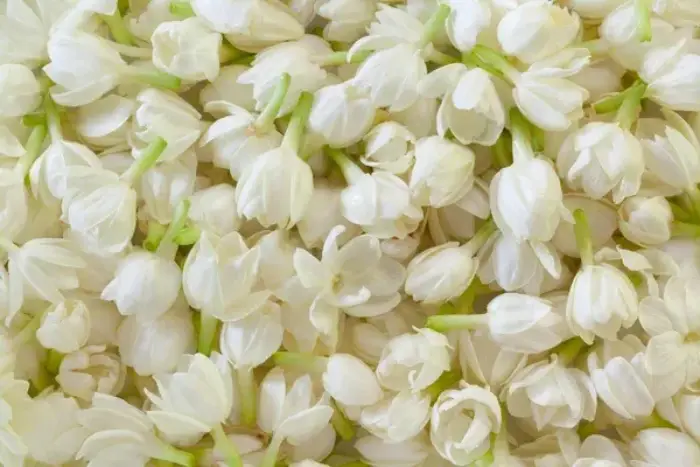In the architecture of a perfume, middle notes—also called heart notes—are the essence of the fragrance. They emerge after the initial top notes fade and form the emotional and olfactory core. Among the most iconic and cherished middle notes in perfumery is jasmine. Known for its intoxicating, floral richness, jasmine lends elegance, sensuality, and warmth to countless compositions. This article explores the power of jasmine as a heart note, its emotional resonance, and its essential role in perfumery.
What Is Jasmine?
Jasmine refers to a group of flowering plants in the genus Jasminum, with the two most prized species in perfumery being:
Jasminum grandiflorum – softer, more delicate
Jasminum sambac – richer, sweeter, and more exotic
Jasmine flowers are handpicked early in the morning to preserve their potent aroma. Natural jasmine oil is one of the most precious and expensive ingredients in perfumery, often replaced or enhanced with synthetic molecules like hedione or jasmolactone.
Olfactory Profile of Jasmine
Jasmine has a multidimensional scent that includes:
Floral richness
Sweetness with a slightly fruity touch
Creamy, warm undertones
A hint of animalic or indolic depth (especially in natural extractions)
Its duality—delicate yet intense—makes it one of the most complex and captivating floral notes.
Jasmine as a Middle Note
As a middle note, jasmine:
1. Forms the Emotional Core
Jasmine rises after the top notes fade and lingers, carrying the emotional narrative of the perfume. It adds:
Romance
Sensuality
Refinement
Whether in a soliflore composition or as part of a floral bouquet, jasmine defines the heart of the fragrance.
2. Bridges Light and Depth
Its richness allows jasmine to connect fresh top notes with deeper base notes, like woods, musks, and ambers. This makes it an ideal anchor for balanced compositions.
3. Works Across Styles
Jasmine is found in a wide range of perfume styles:
Floral – with rose, orange blossom, or ylang-ylang
Oriental – combined with spices, resins, and woods
Chypre – alongside patchouli, oakmoss, and citrus
Green or fresh – paired with herbs and citrus notes
Symbolism and Cultural Significance
Jasmine has long symbolized:
Purity and grace
Love and sensuality
Femininity and mystique
It holds spiritual and romantic significance in Indian, Middle Eastern, and Mediterranean cultures. In aromatherapy, jasmine is used to:
Reduce stress and anxiety
Promote relaxation and emotional openness
Enhance mood and confidence
Jasmine in Iconic Perfumes
Chanel No. 5 – A floral-aldehydic classic featuring a rich jasmine heart
Dior J’adore – A modern bouquet with jasmine sambac and other white florals
A La Nuit by Serge Lutens – A tribute to natural jasmine, rich and nocturnal
Alien by Mugler – A bold jasmine-centered fragrance with a mysterious aura
Joy by Jean Patou – An opulent floral featuring jasmine and rose in abundance
Pairing Jasmine in the Heart
Jasmine blends harmoniously with:
Rose – for classic floral elegance
Tuberose or Ylang-Ylang – for exotic richness
Citrus top notes – to brighten the floral core
Amber and musk base notes – to enhance warmth and sensuality
Spices like cardamom or cinnamon – for a more daring composition
Conclusion
As a middle note, jasmine is a symbol of grace, warmth, and sensuality. Its timeless appeal lies in its ability to be both delicate and bold, romantic and mysterious. Whether used in modern or vintage formulations, jasmine remains one of the most powerful tools in the perfumer’s palette, creating fragrances that linger in memory and touch the heart.

